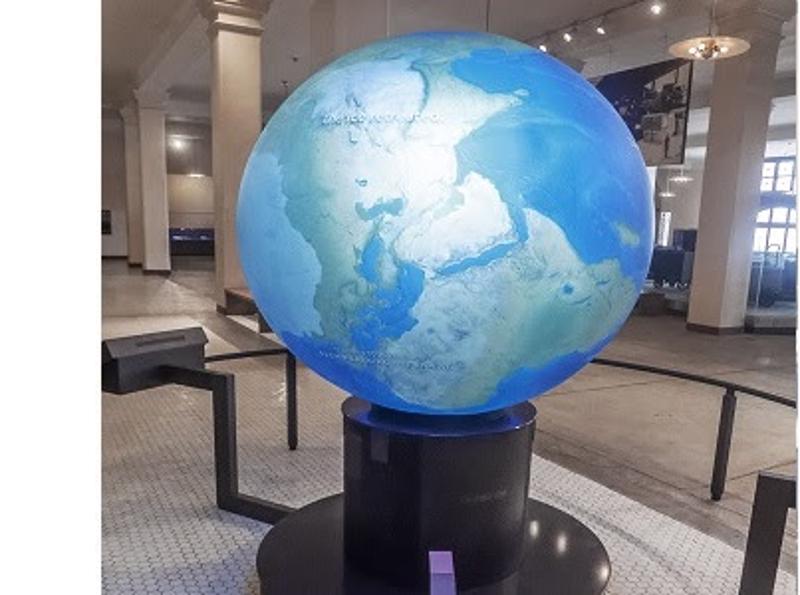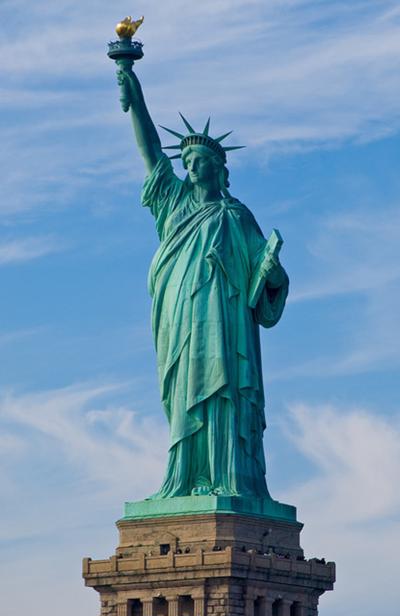My diary
Today, we are leaving Philly and traveling 97 miles to New York City. The gas price was $2.56 per gallon, so we spent $6.20 in gas. We decided that it was only right to visit the Statue of Liberty first. For us, the tickets for the ferry cost us $18.50 each. Everyone, but Gaby, went on the ferry tour because she was sick. So, in total, we paid $55.50. Gaby, "Guys, I think I'm coming down with something, I'll just wait for you guys here." Carlos, "K bye!" While on our ferry ride, we learned about some of Lady Liberty's history. Vivi, "Here are some facts: (1) The seven spikes represent the seven seas and seven continents of the world. (2) The statue's torch has been closed to the public since the "Black Tom" explosions in 1916. German agents sabotaged a munitions depot on a nearby island on July 30, 1916, and shrapnel damaged the statue's torch and skirt. (3) The Statue of Liberty is recognized as a symbol of freedom and democracy." We also learned that the Statue of Liberty's original color was bronze, but after time, it started to turn green. Next, we went the Liberty Island Museum, where we each had to pay $3. Here, we saw the World Migration Globe Exhibit and we read about the Ellis Island History. Carlos, "It's a radiant globe which illustrates migration patterns throughout human history not only to the U.S., but around the world. It also has the history of immigration to the U.S. from the 1800s to the present." Vanessa, "Here's facts about Ellis Island: (1) From 1892 to 1954, over twelve million immigrants entered the U.S. through the portal of Ellis Island. (2) The local Indian tribes called it "Kioshk" or Gull Island. Due to its rich and abundant oyster beds, it was known as Oyster Island for many generations during the Dutch and English colonial periods. (3) Ellis Island developed from a sandy island that barely rose above the high tide mark, into a hanging site for pirates, a harbor fort, ammunition, and ordinance depot named Fort Gibson, and finally into an immigration station."
After a full day of exploring, we decided to check into our hotel and count our remaining money. We stayed at a $85 hotel nearby. As our daily expenses, we spent $156, leaving us with a budget of $2,087.01.
vanrod19
20 chapters
16 Apr 2020
Chapter Fourteen: N.Y.C.
New York City
Today, we are leaving Philly and traveling 97 miles to New York City. The gas price was $2.56 per gallon, so we spent $6.20 in gas. We decided that it was only right to visit the Statue of Liberty first. For us, the tickets for the ferry cost us $18.50 each. Everyone, but Gaby, went on the ferry tour because she was sick. So, in total, we paid $55.50. Gaby, "Guys, I think I'm coming down with something, I'll just wait for you guys here." Carlos, "K bye!" While on our ferry ride, we learned about some of Lady Liberty's history. Vivi, "Here are some facts: (1) The seven spikes represent the seven seas and seven continents of the world. (2) The statue's torch has been closed to the public since the "Black Tom" explosions in 1916. German agents sabotaged a munitions depot on a nearby island on July 30, 1916, and shrapnel damaged the statue's torch and skirt. (3) The Statue of Liberty is recognized as a symbol of freedom and democracy." We also learned that the Statue of Liberty's original color was bronze, but after time, it started to turn green. Next, we went the Liberty Island Museum, where we each had to pay $3. Here, we saw the World Migration Globe Exhibit and we read about the Ellis Island History. Carlos, "It's a radiant globe which illustrates migration patterns throughout human history not only to the U.S., but around the world. It also has the history of immigration to the U.S. from the 1800s to the present." Vanessa, "Here's facts about Ellis Island: (1) From 1892 to 1954, over twelve million immigrants entered the U.S. through the portal of Ellis Island. (2) The local Indian tribes called it "Kioshk" or Gull Island. Due to its rich and abundant oyster beds, it was known as Oyster Island for many generations during the Dutch and English colonial periods. (3) Ellis Island developed from a sandy island that barely rose above the high tide mark, into a hanging site for pirates, a harbor fort, ammunition, and ordinance depot named Fort Gibson, and finally into an immigration station."
After a full day of exploring, we decided to check into our hotel and count our remaining money. We stayed at a $85 hotel nearby. As our daily expenses, we spent $156, leaving us with a budget of $2,087.01.



1.
Chapter One
2.
Chapter Two: Meteor Crater
3.
Chapter Three: Tombstone, Arizona
4.
Chapter Four: San Antonio
5.
Chapter Five: Oklahoma City
6.
Chapter Six: Memphis, Tennessee
7.
Chapter Seven: St. Louis, Missouri
8.
Chapter Eight: Montgomery, Alabama
9.
Chapter Nine: Fort Sumter, S.C
10.
Chapter Ten: Lost Colony, N.C.
11.
Chapter Eleven: Kitty Hawk, N.C.
12.
Chapter Twelve: Washington, D.C.
13.
Chapter Thirteen: Freedom, Philadelphia
14.
Chapter Fourteen: N.Y.C.
15.
Chapter Fifteen: Bean Town
16.
Chapter Sixteen: Chicago
17.
Chapter Seventeen: North and South, Dakota
18.
Chapter Eighteen: Denver, Colorado
19.
Chapter Nineteen: Grand Canyon
20.
Chapter Twenty: Home
Share your travel adventures like this!
Create your own travel blog in one step
Share with friends and family to follow your journey
Easy set up, no technical knowledge needed and unlimited storage!
© 2025 Travel Diaries. All rights reserved.